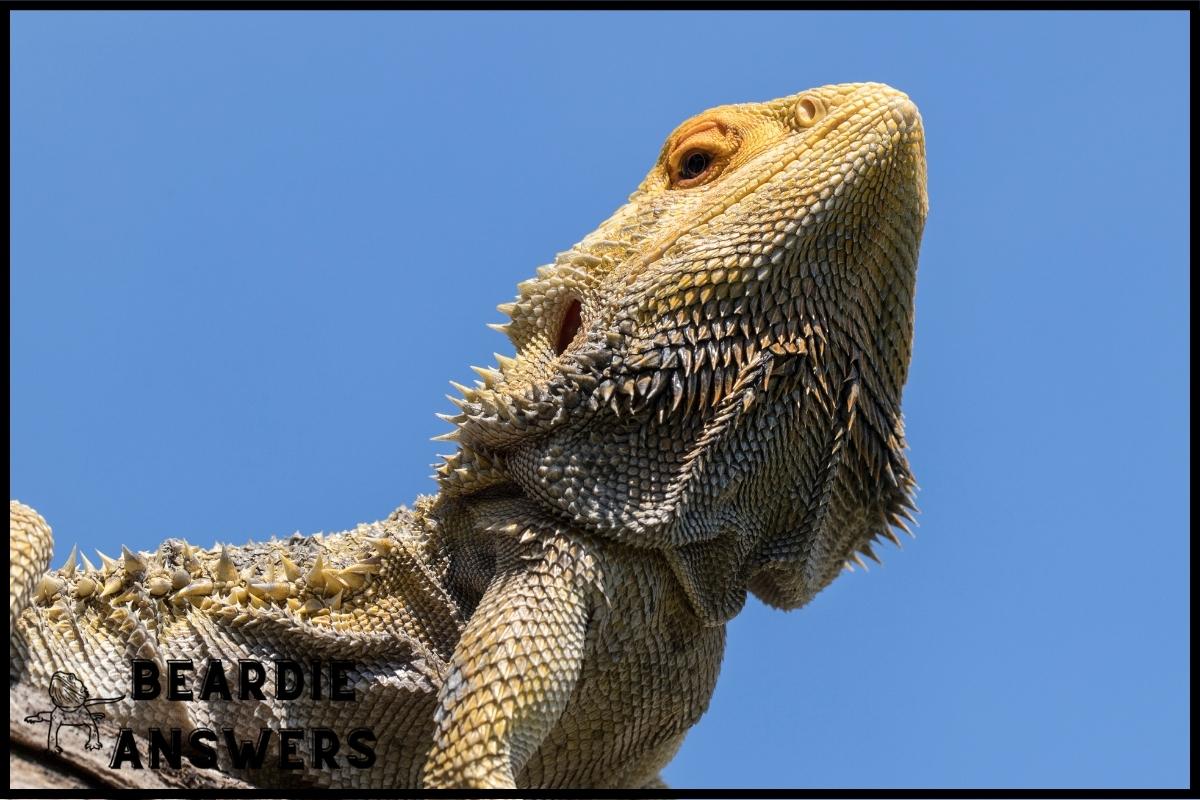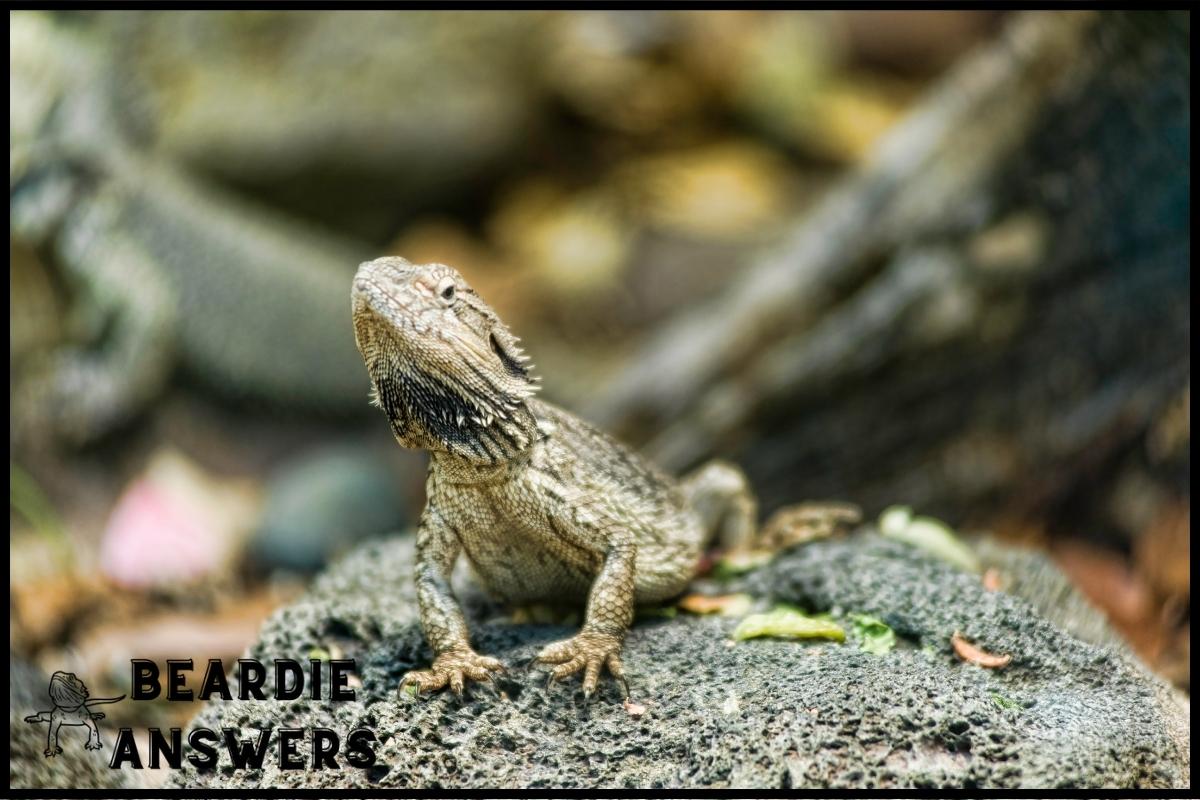Maintaining moderate humidity levels is important for the overall health of bearded dragons. Low humidity levels can lead to dehydration and shedding issues, while high humidity levels can cause respiratory problems and bacterial infections. A humidity level of around 30-40% is recommended for bearded dragons.
What You'll Learn
Understanding The Need For Humidity
It was a hot and humid day in the desert. The heat seemed to permeate everything, even the air itself. But for one small creature, the humidity had a different meaning – it could be life or death.
This tiny being, known as a bearded dragon, depends on their environment to stay healthy. Avoiding humidity is essential for these creatures; they need careful control of this element in order to thrive. The importance of controlling the humidity level for bearded dragons cannot be overstated.
Too much moisture can put them at risk of respiratory infections, while too little will make it difficult for them to shed their skin properly and absorb necessary minerals from the soil. It’s up to the keeper of these animals to ensure that conditions are just right so that both physical and psychological health remain optimal.
Humidity management requires knowledge not only about how much should be present but also when changes occur due to seasonal shifts or other factors such as water sources nearby. Learning how best to regulate humidity levels is essential if you want your pet lizards to live long and happy lives.
With an understanding of what constitutes ideal levels comes the ability create an appropriate habitat with all elements balanced correctly…which leads us into our next discussion: finding out what exactly is considered ‘ideal’ for these reptiles?
The Ideal Humidty Range For Bearded Dragons
Let’s talk about measuring humidity and how to maintain it for bearded dragons.
We need to make sure that the humidity level is around 30-40%, so we’ll have to figure out how to measure it and how to keep it at the optimal level.
Measuring Humidity
When it comes to measuring the ideal humidity range for bearded dragons, there are several sources and types of humidifiers that can be used.
One way to measure humidity is with a hygrometer which will provide an accurate reading of the air’s moisture levels.
Additionally, you can use things like substrate or misting to increase the overall humidity in your dragon’s enclosure.
There are various types of humidifiers available such as cool-mist, ultrasonic, impeller, and evaporator models – each providing different benefits depending on what your needs may be.
By utilizing these tools together, you should be able to create a comfortable environment for your bearded dragon with moderate humidity levels of around 30-40%.
Maintaining Humidity
Once you have the humidity levels balanced for your bearded dragon, it’s important to maintain them.
This includes making sure that their tank setup is appropriate and providing the necessary hibernation needs when winter comes.
You should check your hygrometer regularly to make sure that the air isn’t too dry or too wet – maintaining a steady level of around 30-40%.
It may also be beneficial to invest in an automatic humidifier if keeping track of these numbers becomes difficult.
Make sure to adjust accordingly as seasons change so your pet can stay healthy and comfortable all year long!
The Effects Of Too Much Or Too Little Humidity
When it comes to humidity, bearded dragons require moderate levels of around 30-40%. However, the effects of too much or too little humidity can be severe for this species. It is important that reptile owners monitor any changes in their environment and adjust accordingly.
If a bearded dragon’s habitat does not have an optimal humidity level, some risk factors may occur such as dehydration and respiratory issues. Here are three signs of possible excessive or low humidity:
- Shedding problems – if your bearded dragon has difficulty shedding its skin, there could be an imbalance in the air’s moisture content.
- Mouth breathing – when breath rate increases drastically due to dryness in the environment.
- Skin colouration – pale colouring on the lizard’s body often indicates lack of hydration caused by either high or low humid levels.
In order to keep a healthy home for your pet, measuring and monitoring the relative humidity inside their enclosure should be done regularly. A hygrometer will provide accurate readings so you can make adjustments where necessary.
With careful consideration taken towards both temperature and humidity requirements, a comfortable living space can be provided for your beardie.
Measuring Humidity Levels
Let’s start by discussing how we can monitor humidity levels,
and then move on to what the ideal humidity levels are indoors.
Monitoring Humidity
It is important to monitor humidity levels for bearded dragons, as they need moderate humidity in order to thrive.
There are several techniques that can be used to measure the level of moisture in their habitat; such as using a hygrometer or monitoring the dew point on plants inside their enclosure.
Additionally, there are various methods for controlling and adjusting humidity levels depending on what kind of environment you’re trying to create.
By paying close attention to these measures, you’ll ensure your pet dragon has an optimal living space.
Indoor Humidity Levels
Controlling humidity levels indoors can be tricky, but it’s important to get the temperature and moisture balance just right for your bearded dragon.
You’ll need to adjust both the indoor temperature and the level of humidity in order to create an optimal environment.
Temperature control is relatively straightforward; you can use a thermometer or thermostat to make sure that temperatures remain consistent.
Measuring humidity levels accurately is a bit more complex, though – you may want to invest in a hygrometer if you don’t already have one.
That way, you can monitor how much moisture is present in the air at any given time.
Keeping tabs on these two elements will help ensure that your pet has everything they need to stay comfortable and healthy!
Creating A Humid Environment
Creating a humid environment for your bearded dragon can be done in several ways.
Humidifiers are an effective and easy-to-use tool to increase the humidity levels of their enclosure. If you choose to use one, make sure it is made specifically for reptiles, as this will ensure that the correct amount of moisture is released into the air.
Additionally, spray bottles are great for providing localized moisture or misting your pet’s skin. You should aim to mist them at least twice daily to keep their skin hydrated and supple.
It’s important to monitor humidity levels regularly with a hygrometer so you know when adjustments need to be made. Pay attention not only to how much water you’re adding but also any other factors such as ventilation that may affect these readings.
When working towards maintaining optimal humidity levels, try adding some artificial plants or additional hiding places which can help retain moisture better than bare surfaces do.
Overall, creating a humid environment doesn’t have to be complicated if you understand what tools are available and how best to use them. With just a few simple steps, you’ll be able to keep your pet healthy and happy!
Transitioning now into maintaining optimal humidity levels…
Maintaining Optimal Humidity Levels
Moving away from creating a humid environment, it is important to maintain optimal humidity levels for bearded dragons. Generally speaking, the ideal temperature range should be between 30-40%.
To ensure that your pet remains healthy and comfortable, you may need to invest in a humidifier or misting system. One interesting statistic to consider is that these systems can cost anywhere between $50-$200 depending on their size and quality. While this may seem like an expensive investment upfront, they can actually help save money in the long run by reducing vet bills due to dehydration and other health issues caused by low humidity levels.
For those who are looking for more affordable options, there are several DIY alternatives available online such as using wet sponges or damp towels placed strategically in terrariums. These methods have been known to successfully raise humidity levels without breaking the bank!
Additionally, it’s important to remember that regular monitoring of both temperatures and moisture readings are essential for keeping your beloved pet happy and healthy.
Conclusion
Humidity levels for bearded dragons can be tricky to maintain, but with a few simple steps you can make sure your scaly friend is living in the ideal environment!
First of all, it’s important to understand why humidity is so important and what range you should aim for.
Then take some time to measure and create an environment that will keep them healthy and happy!
Finally, remember that regular monitoring and adjustments are necessary if you want to keep their habitat at optimal levels.
So don’t give up – a little effort goes a long way when it comes to providing proper care for your pet! Trust me, they’ll thank you later!

Hi! My name is Bryan, I am the “one behind the words” here are BeardieAnswers.com. I believe that providing quality care and nutrition is the best way to ensure the health of your pet. Every beardie is special and deserves the best care and attention. If you have questions about your bearded dragon, please don’t hesitate to ask! View My Full Author Page




